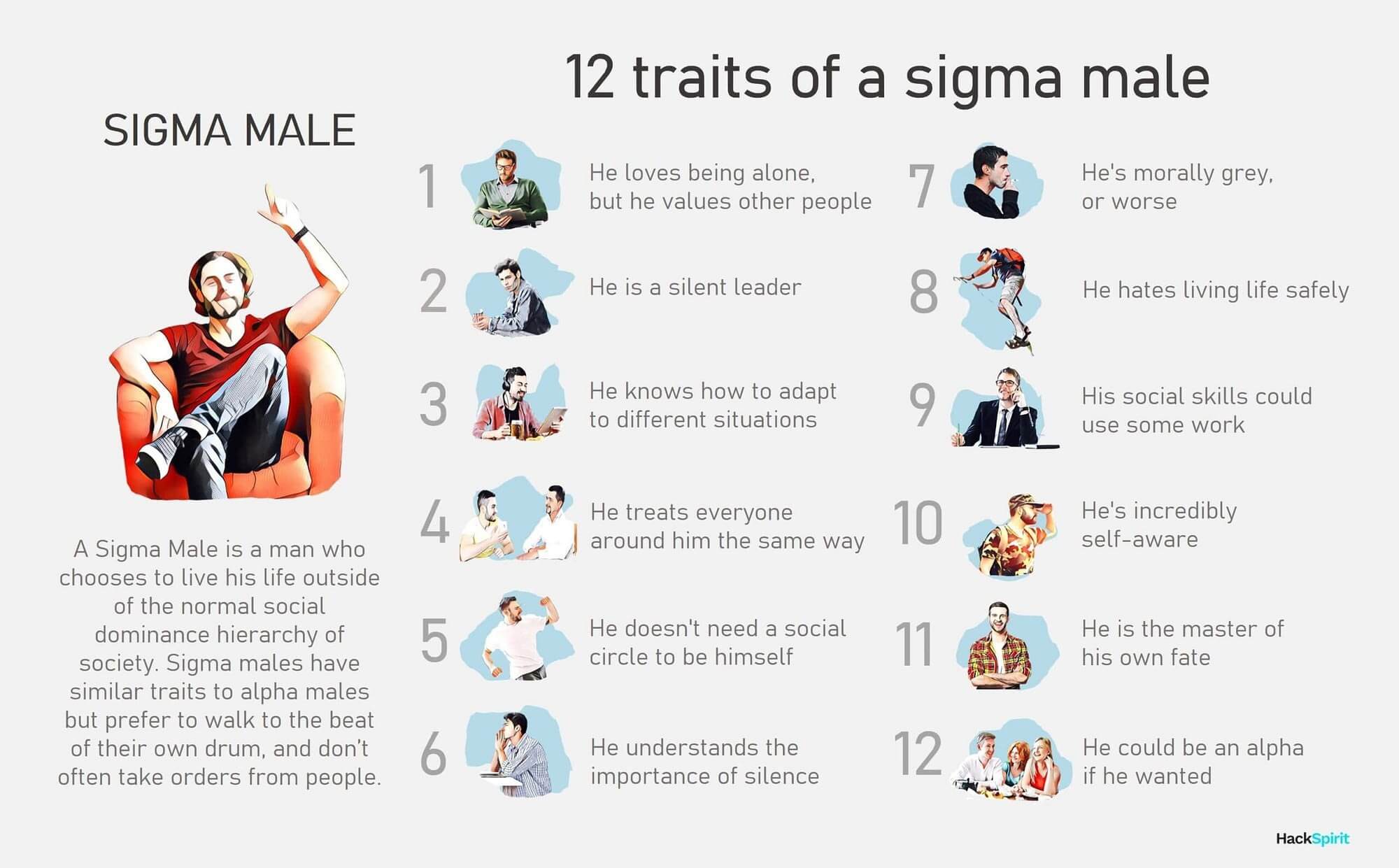The term “sigma male” is often used in pop psychology to describe a personality type that is independent, self-reliant, and non-conformist. Here are 12 common signs often associated with a sigma male:
- Prefers Independence: Sigma males value their freedom and prefer to operate independently rather than follow the crowd or rely on others.
- Self-Reliant: They tend to rely on themselves for their needs and decisions, trusting their own judgment and capabilities.
- Quiet Confidence: Sigma males often have a quiet, unassuming confidence that doesn’t require validation from others.
- Introverted but Not Shy: They often enjoy solitude and may be introverted, but this doesn’t mean they are shy or lack social skills.
- Non-Conformist: They typically resist societal norms and expectations, choosing to live by their own rules and standards.
- Observant: Sigma males tend to be keen observers of their environment and the people around them, often noticing things others might miss.
- Mysterious: Their reserved nature and tendency to keep to themselves can make them appear mysterious and intriguing to others.
- High Self-Awareness: They usually have a strong sense of self-awareness, understanding their strengths, weaknesses, and motivations.
- Goal-Oriented: Sigma males are often highly focused on their goals and ambitions, prioritizing their personal growth and achievements.
- Adaptable: They can adapt to different situations and environments, making them versatile and resilient.
- Selective with Relationships: They tend to be selective about who they let into their inner circle, valuing deep, meaningful connections over a large social network.
- Value Authenticity: Sigma males prioritize authenticity in themselves and others, disliking superficiality and pretenses.
It’s important to note that the concept of a sigma male is more of a descriptive archetype rather than a scientifically validated personality type. It reflects certain traits and behaviors that some people may exhibit, but it’s not a rigid or universally applicable classification.
